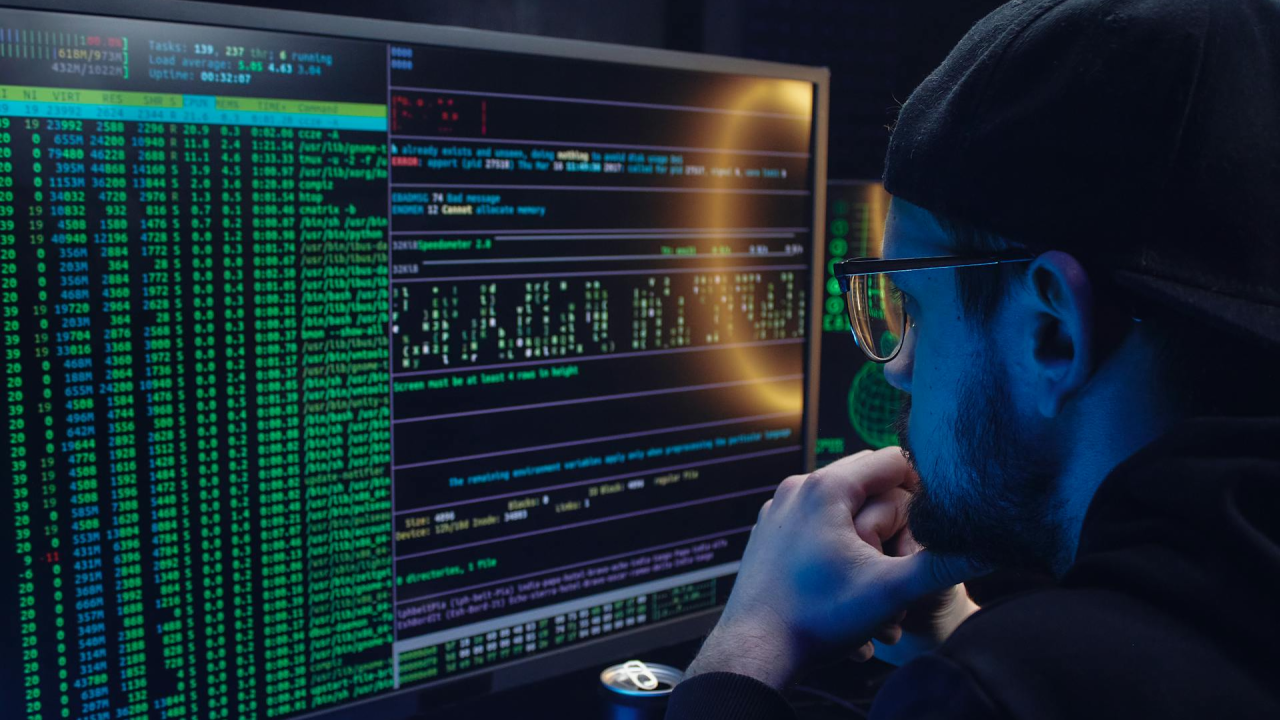The Q2 2025 report on the YNG token. What happened? What are the next steps?
The second quarter of 2025 will be remembered as a strategic turning point for our ecosystem. It was a period of intense work that culminated in a historic event: the arrival of Young (YNG) on the decentralised market. The enthusiasm of our community was palpable, with the token’s price seeing a sharp appreciation following the launch announcement, rising from around €0.20 at the beginning of July to a high of €0.45.
This Report analyses in detail the significance of this step, the strategies that made it possible, and above all, the following exciting developments. On the occasion of an event as important as the Uniswap launch, we have decided to make this edition of the report entirely public and accessible to everyone. We want the entire community, and beyond, to fully understand the scope of this turning point.
This is a notable exception: starting from the next edition, the report will return to being exclusive content, with detailed insights into numbers and strategies, reserved solely for our Club members. Suppose you are not yet one of us. In that case, this is the perfect opportunity to experience the level of transparency and detail we offer and to consider joining the Clubs to stay informed about future in-depth analyses.
The launch of YNG on Uniswap and CoinMarketCap
As repeatedly stated, the YNG listing is just the beginning. However, the third quarter of 2025 is, in a sense, the most important of the year, as it will culminate in the realisation of key projects that propel us toward our ultimate goal: to become a digital hub that merges the best of traditional finance (TradFi) and decentralised finance (DeFi).
The launch of YNG on the decentralised exchange Uniswap took place on July 17th. From that moment, and for the first time in history, our token became accessible to a global audience, marking our official entry into the world of DeFi. Concurrently, we secured listings on CoinMarketCap and CoinGecko, ensuring maximum visibility and transparency from the very first minute.
The Unbox: Young Platform’s richest prize competition ever
But the news doesn’t stop there. In recent weeks, we also launched “The Unbox,” our largest and most ambitious prize competition ever, with the primary goal of freeing participants from their preconceptions about finance.
With a prize pool that includes iconic prizes (like a Rolex Datejust and a Moto Guzzi V7) and new game mechanics, this event is designed to increase our community’s engagement and put them to the test, allowing users to win incredible prizes as a natural continuation of their journey exploring the crypto world.
In this context, YNG is the absolute star thanks to the Boost Holder, a mechanism that provides a tangible advantage to those who hold the token in their Young Platform wallet. Specifically, at the end of each week, users receive an extra Gem bonus, calculated based on the amount of YNG held in their wallet (tokens held in Clubs are excluded). It’s a simple, automatic, and merit-based system: the more YNG you own, the more bonus Gems you get, regardless of the missions completed. This is our way of rewarding those who choose to keep their capital in YNG during this key phase of its evolution.
OTC Allocation for Strategic Partners
During this quarter, a strategic allocation of 2,000,000 YNG tokens was almost entirely completed through an Over-the-Counter (OTC) sale that began on July 1, 2025. To date, 100% of the sales target in Euros has been reached, for a total of 474.766,22 €, corresponding to 1.722.440,88 YNG.
This initiative was reserved for selected profiles, High-Net-Worth Individuals (HNWIs), and top users of the platform, to strengthen our ecosystem by involving actors aligned with our long-term vision.
The offer included a minimum purchase of €5,000 and a tiered bonus structure to incentivise larger investments:
- 5% bonus for purchases over €10,000
- 10% bonus for purchases over €50,000
- 15% bonus for purchases over €100,000
To discourage speculation and ensure long-term alignment, participants could opt for an additional 15% bonus by locking their tokens. The unlocking terms for these tokens include a 6-month total lock-up period (cliff), followed by a linear monthly release over the subsequent 6 months. The selection of participants was rigorous, ensuring that each partner shared our long-term oriented approach.
The proceeds from this allocation will be entirely reinvested to support YNG’s growth. Specifically, they will be used to finance upcoming marketing campaigns, potential listings on other centralised exchanges, and to fuel the token’s stability mechanisms, such as buyback programs and liquidity injections.
Given the success of the initiative, we have prepared a new allocation plan, which we will describe in detail in future updates. Unlike the OTC sale, this new plan entails that token purchases will be executed directly on the market. This means they will have a direct impact on the price of YNG. Further details on this future initiative and participation requirements, also based on Club membership, will be shared exclusively with Club members.
Economic Model Integration: Liquidity Injections and Periodic Buybacks
The following strategic step for YNG’s infrastructure is the activation of our new economic model, designed to support its value and liquidity over time.
The integration will be gradual: the mechanism will become fully operational only with the launch of new features, such as the payment account, the card, and perpetual futures trading, scheduled for the second half of 2025.
However, to provide tangible support to the token from its launch, we have chosen to activate an observation phase immediately. We have allocated a dedicated monthly budget and are ready to intervene to support the project if necessary. This initial phase will then be replaced by a portion of the platform’s revenues with the launch of the new features.
As stated multiple times, the economic model is based on two main actions:
- Liquidity Injections: The funds will be used to add liquidity to the pools, making the market more stable and resilient.
- Buyback (market purchase): If a liquidity injection creates an imbalance, the mechanism will use the funds to buy YNG on the market, realigning the value of the assets in the pool and supporting the price. The control and rebalancing between the quantity of Young (YNG), EURO, and USDC in the Pools will be carried out monthly.
To simplify, the process will work as follows:
- Month 1: Assuming a monthly budget of €20,000, this entire sum is used to purchase the YNG token directly on the market. This buyback operation is intended to support the token’s price.
- Month 2: The YNG tokens purchased in the previous month are paired with the current month’s budget. The asset pair (YNG and Euro) is then added to the liquidity pool, increasing the market’s depth and stability. The cycle repeats in the following months.
New Benefit for Clubs: Pulsee Energy
The second quarter of 2025 also brings a new, significant benefit for members of the Young Platform Clubs, designed to meet one of the most pressing needs of the moment and to enrich the user experience from a financial and practical standpoint.
In a context marked by the rising cost of living, we have forged a strategic partnership to offer a concrete and immediate advantage.
Pulsee Luce e Gas: a new energy for your finances. We have joined forces with Pulsee Luce e Gas, the 100% digital energy company of Axpo Italia, to give you greater control over your household expenses. This collaboration was born to offer you not only tangible savings but also an innovative and transparent experience, in line with the Young Platform philosophy.
Club members can now access an exclusive discount on their bills:
- €140 discount on electricity and gas for Club Bronze & Silver members.
- €160 discount on electricity and gas for Club Gold & Platinum members.
Pulsee offers energy from 100% renewable sources, fully digital management via an app, and zero paper constraints—a concrete way to cut costs where they weigh the most and protect your purchasing power.
This benefit adds to the others already active and demonstrates our ongoing commitment to enriching the value of the Clubs. New collaborations are already being defined to make the experience for our members ever more complete and distinctive.
Strategic Insights and On-Chain Data
The following section represents the level of in-depth analysis that is usually reserved exclusively for members of the Young Platform Clubs: confidential information, strategic data, and previews that are not publicly shared.
As a notable exception to celebrate the listing, we are making this content public. In these pages, you will discover the complete evolution of our ecosystem: from the organic growth of the YNG token, which we consider fundamental for it to remain “healthy,” to the new phase of our roadmap.
Listing on Uniswap, CoinMarketCap, CoinGecko
The launch of YNG on Uniswap was executed with a precise strategy, aimed at ensuring stability and maximum transparency for our community. In conjunction with the listing, we secured the presence of YNG on the two most important data aggregators in the world, CoinMarketCap and CoinGecko.
We are in direct contact with their respective teams to ensure that all information (supply, market data, etc.) is always accurate and up-to-date.
To create the market on Uniswap, we split the liquidity pools already present on our exchange, using part of those funds to develop the new decentralised pool on Uniswap V3. At the same time, to ensure clear on-chain visibility, we have structured the YNG supply into three main wallets:
1. Wallet: treasury & ecosystem rewards
This is our main wallet, containing 66 million YNG. Its function is twofold:
- Ecosystem Rewards: A portion of the funds fuels the benefits for Club members, such as enhanced staking, contest prizes, and future cashback.
- Treasury: The other part serves as a strategic reserve to support the token’s long-term growth, financing the buyback mechanism, liquidity additions, and other future initiatives. We have chosen not to define the breakdown of these funds rigidly. This flexibility is crucial to seize opportunities that will arise in the coming years and to continue rewarding our most loyal users, while always keeping inflation under control.
Wallet Address (Etherscan): 0xe237A24f67457d32a294b9F21C026C63C7a66B15
2. Exchange Hot Wallet
This wallet contains approximately 24.9 million YNG and represents the circulating supply held by users on our platform. If you are a YNG holder on our exchange and have not withdrawn the tokens to an external wallet, your funds are safe here.
Wallet Address (Etherscan): 0x2Ce9f4Fc52AF5498B99597141E66a4273Aa74983
3. Team Wallet
7% share of the total YNG supply, equivalent to 7 million tokens, has been allocated to an incentive plan for the team. The objective of this reserve is to align the interests of our staff with the long-term growth of Young Platform, rewarding their strategic contribution. The distribution of 5% of the total token supply will begin in early August and will follow a four-year gradual vesting mechanism. This system ensures a constant commitment over time. Should a team member end their collaboration with the company, they would forfeit the right to receive the unvested portions of the tokens. Furthermore, to support the company’s expansion goals, the 2 million YNG (equal to 2% of the total supply) not yet allocated will be reserved for the recruitment of future talent.
Wallet Address (Etherscan): 0xA26Cbb76156090f4B40A1799A220fc4C946aFB3c
The management of the entire reserve will be carried out with maximum transparency; it will be possible to monitor the amount of tokens released into the market by directly analysing the holders section on Etherscan. Moreover, the issuance of these tokens will be regulated by a mechanism linked to the market capitalisation, which will align the increase in supply with the project’s growth.
4. Wallet for Uniswap Liquidity (LP Token)
This wallet contains the tokens that represent the liquidity provided by Young Platform to the decentralised exchange Uniswap.
What are LP tokens? When you provide liquidity to a pool on Uniswap, you deposit two tokens in a “pair” (in this case, YNG and another asset, like ETH). In return, Uniswap issues LP (Liquidity Provider) tokens.
These tokens act as a “receipt”: they prove ownership of a share of that liquidity and entitle you to receive a portion of the fees generated each time someone trades the tokens in that pair. This wallet holds these LP tokens, guaranteeing YNG’s liquidity on the decentralised market of Uniswap. As of 07/27/2025, the liquidity locked at this address corresponds to 1,732,074 YNG.
Wallet Address (Etherscan): 0x1C65313c3BE89D78Ba315A044eB5847D21a3A2Eb
The Numbers for Young Platform Clubs in Q2 2025
Let’s now turn to the numbers from the last few months. As you know, YNG is the utility token of Young Platform and grants access to the Clubs: subscription plans that offer significant advantages both on our crypto services and on a selection of brands designed to enrich every aspect of your financial life. First, a clarification is necessary: due to a tracking error related to past promotions, the member data reported in previous reports was not entirely correct. Specifically, some users who were taking advantage of a promotional access to our first Club level, an initiative aimed at testing new engagement strategies, were mistakenly counted. Below are the updated and certified data.
As of 07/27/2025, the Clubs are composed of 1,830 people, divided as follows:
- 1,205 for Club Bronze;
- 275 for Club Silver;
- 156 for Club Gold;
- 194 for Club Platinum;
This data also allows us to analyse the token’s distribution. The more people join a Club, the more YNG is locked, thus reducing the circulating supply. Consequently, this dynamic contributes to greater price stability for YNG. At the end of the first quarter of 2025, Club members numbered 1,797, marking a growth of about 1%. At first glance, the growth may seem modest. Still, the data must be interpreted in light of another factor: the choice of many users to leave the Clubs to have their tokens available for the listing and to capitalise on a potential price increase of Young (which did indeed happen) to realise a profit.
Below is a chart summarising the growth of Club members from the launch of Young (YNG) on our platform to today. We intend to build a dedicated dashboard accessible to Club members through which it will be possible to see, in real time, how the adoption of our loyalty programs evolves.

YNG Token Distribution
In the period between early April and late July 2025, the circulating supply of YNG increased from approximately 24 to 27 million tokens. It is crucial to clarify the nature of this increase immediately: it is not the result of new emissions, but the consequence of a strategic OTC allocation, as previously discussed in the report. These 3 million tokens are now included in the circulating supply calculation because they have left the treasury wallet. However, most are subject to vesting periods and are therefore not immediately available on the market.
This strategic dynamic is coupled with the protocol’s organic inflation, stemming from rewards, which, by contrast, has remained at exceptionally low levels. The analysis of the second quarter (Q2) of 2025 confirms this:
- Step Rewards: 33,851 YNG
- Staking Rewards: 3,929 YNG
- Total Q2 Emissions: 37,780 YNG
This total represents a quarterly inflation rate of just 0.14% relative to the circulating supply.

Having defined the composition of the supply, let’s move on to its distribution across the markets. With the listing on Uniswap, YNG’s liquidity was split to support both the CEX and the DEX. As of July 27, 2025, the situation is as follows:
- YNG/EUR Pool (on Young Platform):
- 621,000 Euros
- 1.734 million YNG
- YNG/USDC Pool (on Uniswap – Ethereum):
- 723,905 USDC
- 1.733 million YNG
This configuration is the result of the purchases and sales made on the two markets where Young (YNG) is currently active, summarised below along with the price trend.
What happened during Q2 2025 from a tokenomics perspective?
From a tokenomics perspective, the quantity of tokens issued during the quarter remained in line with previous periods, consistent with our policy of controlled inflation.
This approach, which limits the increase in supply much more significantly than the crypto market average, represents a fundamental strength for YNG’s stability. This characteristic, combined with the new economic model that will be implemented with the launch of new features at the end of Q3 2025, strengthens our prospects for sustainable growth.
A more in-depth analysis of the current circulating supply reveals a strategic division between locked tokens and freely tradable tokens:
- Illiquid YNG: approximately 11.2 million YNG (just under half of the circulating supply) are not immediately available for sale. This figure includes tokens deposited in Clubs, those subject to lock-up periods following the OTC sale, those contained within the liquidity pools, and those on Step.
- Liquid YNG: consequently, the amount of tokens actually “sellable” on the market amounts to approximately 8.6 million.
The rest of the circulating supply is distributed within the ecosystem, mainly on Step and in the two currently active liquidity pools.
The Price of YNG
The second quarter of 2025 marked a turning point for Young (YNG), characterised by exceptional price performance and the achievement of a fundamental strategic objective: listing on a decentralised market.
After a phase of remarkable stability for much of the quarter, with the price hovering around the €0.20 level, the situation changed radically in early July. The announcement of the imminent listing on Uniswap triggered a sudden surge, fueled by the positive reaction of the community.
Intense buying pressure pushed the token above €0.27 in a single day, and then, within a week, it broke the previous all-time high of €0.30. This rally peaked in the week of the launch, when YNG set a new all-time high around €0.50, marking an appreciation of about +120% since the end of June.
The enthusiasm was such that, at the time of listing, the price even briefly touched the one-dollar mark on the on-chain pool. While we appreciate this performance, our goal remains steady and organic growth, avoiding excessive volatility and linking the token’s value to its real utility within the platform.
The Next Steps
The listing on Uniswap is not a destination, but the beginning of a new phase of expansion. Our strength lies not in short-term hype, but in building a solid, secure, and valuable ecosystem. Our course for the coming months is set and is based on three fundamental pillars:
1. Global Expansion and Targeted Marketing
The launch on Uniswap kicks off our first true international marketing campaign to make the project known far beyond Italy’s borders. It’s not just about promoting the token, but about making the entire Young Platform ecosystem accessible and attractive to a global audience, increasing its utility and avoiding purely speculative logic. We will act with a strategic and measured approach, collaborating with agencies and KOLs (Key Opinion Leaders) specialised in the Web3 sector. Thanks to a flexible structure, we will analyse data in real time to focus investments on the highest-impact activities, thus ensuring organic and sustainable growth.
2. Continuous Platform Development
While the market focuses on price, our team remains focused on our primary mission: building tangible value. Our development roadmap continues unabated, and the release of the announced new features, such as the payment account, the card, and the integration of futures, is our top priority. We firmly believe that the growth of YNG’s value in the long term will not be dictated by hype, but by its real utility. Every new product we integrate into the ecosystem creates new use cases for YNG, increasing its organic demand and offering our community more concrete reasons to hold and use it.
3. Strategic Activation of the Economic Model
In parallel with development, we will activate our new economic model, designed to link the platform’s successes to the token’s stability. The implementation will be gradual: in an initial phase, until the launch of the account and the card, we will be in “observation mode,” carefully monitoring the market to act with targeted support operations where necessary. Subsequently, the mechanism will become fully operational. A portion of the platform’s revenues — generated from trading fees, the Step app, and staking — will be systematically used to perform YNG buybacks or to inject liquidity into the pools, creating a virtuous cycle that supports the token’s value over time.
Conclusions
The second quarter of 2025 concludes by marking a historic turning point for the Young Platform ecosystem. The listing of YNG on Uniswap was not just a technical milestone, but the beginning of a new era of global accessibility and integration into the world of decentralised finance. The enthusiasm of our community and the positive market reaction, which brought the token to a new all-time high, confirm the validity of our vision.
As we have detailed in this report, every step — from the strategic OTC allocation to the launch of The Unbox competition — has been guided by a single principle: the construction of long-term value. Our course remains firm and focused on organic growth, the real utility of the token, and the constant strengthening of our ecosystem, shielded from purely speculative dynamics.
The coming months will be just as intense. We will proceed with determination along the three strategic pillars we have outlined: the expansion of our marketing globally, the release of new and fundamental features like the account, the card, and futures, and the progressive activation of our economic model. We are convinced that these initiatives will further consolidate the position of YNG and our ecosystem.
Your support as Club members is and remains our greatest asset. We thank you for your trust and invite you to continue following us in this exciting chapter of our journey.












